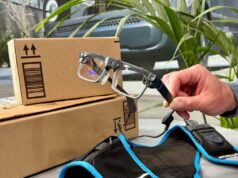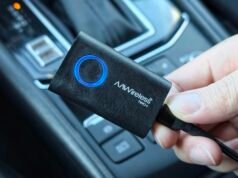It was a year of driving his daughter to school in his new electric vehicle, which Phil Bellamy discovered she dreaded the 10-minute daily commute—it made her feel sick in a way no other car did.
As a driver, Bellamy had no problems with the car, but his teenage daughters struggled with sickness every time they got into the vehicle. Research suggests that’s the issue — people who normally didn’t get motion sickness in a regular car found that they did in an EV.
Bellamy, 51, said his family’s dislike of driving his car made him think twice about it. He tried changing his driving style and even bought another car, but found the problems persisted. His daughters now refuse to travel with him if possible.
“If we go on a trip, they immediately use their travel sickness pills. They don’t even consider getting in the car without them,” he says.
Bellamy enjoys driving his electric cars, which are quieter and smoother compared to the vibrations of a traditional combustion engine car, but hopes manufacturers will consider how to address concerns about passengers affected by motion sickness.
Causes of the illness could include the relatively rapid acceleration of EVs compared to fuel vehicles, their regenerative braking systems, and the lack of sensory triggers such as engine noise and vibrations when traveling in a car.
Research conducted by a major electric car manufacturer in China found that EVs are associated with more severe symptoms of motion sickness than gasoline vehicles.
Atiah Chayne, a content creator from London, posted on TikTok about her experience with car sickness in an EV this summer when she booked an Uber to take her out.
Chayne says the “extreme nausea” hit very quickly and stopped immediately after she got out of the vehicle, but it took her a while to realize it only happened in EVs. She now avoids using Ubers because it’s hard to find one that isn’t EV.
Chayne says, “It usually started quickly, soon after we moved. I would say within a minute of the drive, it would get really bad. I would roll down the windows and go on my phone to distract myself,” she says. “The sickness was there the whole trip. If your Uber is 20 minutes away from your destination, you’re counting the minutes until you get out.”
John Golding, professor of applied psychology at the University of Westminster in London, says motion sickness particularly affects passengers because it is largely related to the ability to anticipate changes in motion.
While drivers have control over the car’s movement, passengers—especially those in the back seat—are, and he thinks this could become more of a potential introduction to self-driving cars.
He says the auto industry is aware of motion sickness issues for some people in EVs and is looking at ways to help passengers anticipate changes in motion, such as vibrations in the car seat that alert the passenger when the car is turning.
Golding says people can also take motion sickness medication or make behavioral changes. “The easiest thing is to sit in front of you so you can see. Avoid moving your head too much, don’t look at your phone, and don’t start reading; that makes things much worse. If you can get some fresh air, that will help,” he says.
How to deal with motion sickness
Experts and the NHS suggest behavioural changes, medication and acupressure bands could help.
Sitting up front is the best way to avoid motion sickness. It allows you to see and anticipate what’s coming next, while sitting in the back is just a glimpse into the past, says Golding.
Try motion sickness medication. These come in the form of patches or tablets, which you can buy from pharmacies, and help control how your brain and body react to movement. They should be taken before traveling in the area.
Wearing AC bands is thought to work for some, although studies may suggest a placebo effect. “Placebo effects can be very, very powerful. If they work for an individual, don’t touch them, ” Golding says.
Listen to 100Hz sound for a minute. Research from Nagoya University in Japan suggests that vibrations at this frequency could help by stimulating the part of the inner ear that detects gravity and acceleration.















